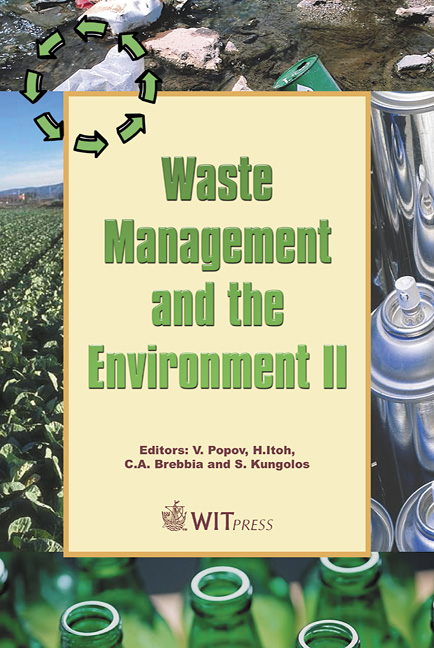Cement-based Immobilisation Of Municipal Incinerator Fly Ash And Reuse Of Solidified Products As A Construction Material
Price
Free (open access)
Transaction
Volume
78
Pages
10
Published
2004
Size
266 kb
Paper DOI
10.2495/WM040041
Copyright
WIT Press
Author(s)
T. Mangialardi, L. Panei & L. Piga
Abstract
A solidification/stabilisation (S/S) process of washed municipal incinerator fly ash with Portland cement was used to manufacture solidified products with high ash content (55 and 70 wt.% of solids) and good performance characteristics in terms of setting, dimensional stability, compressive strength, and environmental quality. The S/S product containing 70 wt.% fly ash aged for 180 days at 20°C and 100% RH was used as an artificial aggregate for the production of Portland cement mortars at four replacement levels of natural sand (0, 10, 50, and 100% by mass), and a water-to-cement weight ratio (w/c) of 0.62. Control mortars were also made at a w/c ratio of 0.50. All mortars were cured at 20°C and 100% RH up to 120 days. No substantial difference in the compressive strength between superplasticised artificial aggregate-bearing mortars and non-superplasticised control mortars was found only if the replacement level of natural sand was not greater than 50% by mass and a w/c ratio of 0.62 was used. All mortars were able to meet the Dutch regulatory limits for selected heavy metals (Cd, Cr, Cu, Ni, Pb, and Zn) when subject to the monolith leach test. Portland cement played an important part in the release of such heavy metals from mortar specimens. Keywords: municipal incinerator fly ash, solidification/stabilisation, reuse, cement mortar, compressive strength, leaching behaviour. 1 Introduction In many industrialised countries, incineration is an increasingly alternative technology to landfill for the disposal of Municipal Solid Waste (MSW).
Keywords
municipal incinerator fly ash, solidification/stabilisation, reuse, cement mortar, compressive strength, leaching behaviour.





